GLOBAL REPORT – We live in a world governed by dynamic pricing. A liter of petrol might cost one thing at 8 a.m. and something else by 6 p.m. Concert tickets are priced according to demand, weather and even the artist’s mood that week. Yet, many hotels continue to operate as if revenue management only applies to rooms. This mindset is costing the industry millions.
The future belongs to properties that master Total Revenue Management (TRM) – an approach that doesn’t stop at the room rate but dives into every revenue stream: restaurants, spas, poolside cabanas, kids’ clubs, wellness experiences, branded retail and more. This isn’t a future fantasy. It’s what today’s best-in-class operators are doing right now to maximize owner returns.
Design for profitability – not just aesthetics
Imagine a luxury beachfront resort targeting multi-generational travelers. On paper, it’s a winner. But when you walk the property, you discover they’ve built just four interconnecting room pairs in a 250-key resort. Their three-bedroom suites – critical for high-spending families – are buried in the back corner with no view. Breakfast service each morning backs up for 25 minutes because there aren’t enough tables to accommodate peak volume and the all-day dining restaurant has a beautiful wine wall – but only 60 indoor seats.
These are not design issues. They are revenue design flaws.
Every physical space, from a spa lounge to a rooftop bar, must earn its keep. A 40 square meter luxury retail boutique generating €100,000 annually sounds respectable – until you realize the adjacent cigar lounge, half its size, is pulling in three times that. Profit per square meter matters.
TRM means having the foresight during planning to ask: what is the revenue potential of each space, and how will it be activated? If you don’t ask before the foundations are poured, you’ll chase lost opportunities for the next decade.
Real optimization starts before the first guest arrives
Most developers assume revenue strategy kicks in just before the ribbon cutting. In reality, the most impactful commercial decisions are made far earlier.
Take the case of a desert resort project During pre-opening, the client was advised to rethink their pool layout. Originally designed with luxury aesthetics in mind, it offered 30 high-end loungers. They were convinced to double the number of shaded cabanas and integrate a bespoke F&B offering into that space. The result? A 300% uplift in poolside F&B revenue within the first six months of operation and a new upsell category that added over $1.2 million annually in topline.
This is the power of integrating revenue thinking into design. TRM doesn’t just boost yield – it builds profitability into the bricks-and-mortar.
Evolving role of revenue optimization
There’s still a misconception that revenue optimization is purely about tweaking prices. But its true role is strategic. It’s about guiding every decision that affects demand, profitability and commercial cohesion.
Consider a resort where spa treatments were booked by 11 a.m. daily, yet the spa still lost money. The issue wasn’t demand but treatment room inefficiency and therapist scheduling. Once KPI tracking per therapist hour was introduced and the spa’s operating rhythm was adjusted, profitability rose by 19% in three months without raising prices or adding staff.
Or take a resort restaurant that was breaking even despite high covers. A menu-engineering audit revealed that 70% of orders came from just six low-margin items. A small redesign of the menu flow, better placement of high-margin dishes, and retraining of the service team led to a 12% increase in profit per cover with zero increase in food cost.
These stories show why revenue optimization must function as the commercial conscience of the hotel – cross-cutting across design, pricing, distribution, guest journey, and operations.
Measuring what really matters
In the past, hoteliers measured success with metrics like occupancy, ADR and RevPAR. These remain useful but are incomplete.
Let’s compare.
At one high-end resort, rooms were always 95% full, and RevPAR was strong. However, the retail space was mostly empty, the spa underperformed in the afternoons, and the main restaurant lost tables to external competition every night. Once TRM principles were applied and new KPIs introduced – like spend per guest by segment, profit per square meter and revenue per available treatment hour (RevPATH) – the property began identifying and fixing its blind spots.
Instead of focusing on room revenue alone, management started tracking metrics such as:
- How much did each outlet contribute to profit per occupied room
- Which guest segments drove the highest ancillary spend
- How efficiently spaces converted real estate into revenue
That’s when the hotel saw an uplift in top-line revenue and a meaningful improvement in gross operating profit margins.
Longevity tourism and the KPI shift
The rise of wellness and longevity-driven travel has introduced a new layer of complexity. You can no longer rely on just treatment revenue as a marker of success.
For example, a luxury mountain retreat in Switzerland began offering five-day longevity programs, including diagnostics, mindfulness, nutrition, and spa. At first, they measured success by package sales. But real growth came when they added KPIs like repeat program retention, conversion rate from spa users to medical guests, and post-stay wellness engagement.
They discovered that guests who booked a second program within six months spent nearly 40% more across all outlets. That insight unlocked a new loyalty strategy, backed by data, not intuition.
Future-facing metrics for a new generation of assets
As guest behavior evolves, so too must the KPIs. Today, it’s no longer enough to track how many people clicked on your website. What matters is what those clicks convert into and how much profit each guest segment yields.
In a recent digital campaign for an ultra-luxury resort in Southeast Asia, website traffic increased 30%, but conversions stayed flat. Once the team analyzed channel profitability by acquisition cost, they reallocated digital spending to higher-converting audience segments – improving ROI by 27% and cutting wastage.
Likewise, as sustainability becomes a core pillar of brand identity, properties are beginning to track guest carbon offset participation, water consumption per room night, and even social media amplification from sustainable design features. One beach resort installed recycled ocean plastic art installations, which generated tens of thousands of social media impressions per month – effectively turning a cost center into a brand-building tool.
Final thought: KPIs are the new language of value
The true measure of hotel performance is no longer occupancy or ADR. It’s whether your property is commercially coherent – with every department, every experience, and every square meter contributing to the asset’s full potential.
As the investment landscape grows more competitive, KPIs aren’t just indicators. They’re a strategic asset. The right ones tell the story of value creation, unlock smarter decisions, and future-proof your returns.
The question is no longer: “What’s our RevPAR?”
It’s now: “Where are we leaving money on the table — and what are we doing about it?”
Contributed by Judith Cartwright, founder and managing director, Black Coral Consulting, Dubai.


